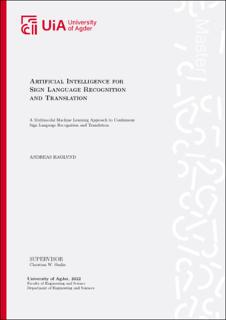| dc.description.abstract | In a world where people are more connected, the barriers between deaf people and hearing
people is more visible than ever. A neural sign language translation system would break
many of these barriers. However, there are still many tasks to be solved before full automatic
sign language translation is possible. Sign Language Translation is a difficult multimodal
machine translation problem with no clear one-to-one mapping to any spoken language.
In this paper I give a review of sign language and its challenges regarding neural machine
translation. I evaluate the state-of-the-art Sign Language Translation approach, and apply
a modified version of the Evolved Transformer to the existing Sign Language Transformer.
I show that the Evolved Transformer encoder produces better results over the Transformer
encoder with lower dimensions. | |
